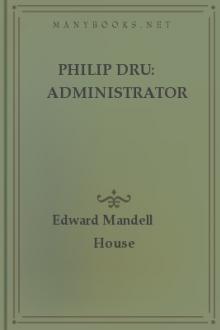My Spiritual Journey, Dalai Lama [best short books to read .TXT] 📗

- Author: Dalai Lama
Book online «My Spiritual Journey, Dalai Lama [best short books to read .TXT] 📗». Author Dalai Lama
The institution established by the Buddha is the Sangha, or monastic community, which itself observes democratic rules. In such a fraternity, individuals are equal, regardless of social class or native caste. The only subtle distinction rests on seniority in ordination.
Individual freedom, on the model of Liberation or Enlightenment, was the main goal of the entire community, and it was accomplished by cultivating the mind in meditation. Everyday relationships were based on generosity, respect, and attention to others. By leading a life without a fixed abode, monks detached themselves from possessiveness, without living in total isolation. The custom of begging only reinforced the awareness of their dependence. Within the community, decisions were made by vote, and disagreements settled by consensus. Thus, the Sangha was exemplary in terms of social equality, sharing of resources, and democratic process.11
During his trip to China in 1954, the Dalai Lama declared his enthusiasm for Marxism, allowing that the socialist economy is closer to the Buddhist ideal than ruthless capitalism. In Marx’s philosophy he found the principles of equality and social justice dear to Buddhism: “My mind could well be redder than the Chinese leaders. In China the Communist regime is governing without Communist ideals,” he declared again in 2008, in expressing his dream of a synthesis between Buddhism and Marxism that could turn out to be highly effective in politics.12
I love the image of swords transformed into plowshares
On October 17, 2007, in the rotunda of the U.S. Capitol Building in Washington, it was again in his capacity as a human being that the Dalai Lama received the Congressional Gold Medal, almost twenty years after receiving the Nobel Peace Prize in Oslo.
He mounted the podium in traditional monastic dress: a large saffron shawl was draped over his burgundy robes, leaving his right shoulder free. Around him, solemn statues fixed in marble the memory of the heroic time of Thomas Jefferson and the founding fathers of the American nation, and frescoes commemorated the battles in which George Washington, Lafayette, and other patriots fought for the independence of the United States.
President George W. Bush moved the audience when he mentioned that as a little boy the Dalai Lama “kept a model of the Statue of Liberty at his bedside. Years later, on his first visit to America, he went to Battery Park in New York City so he could see the real thing up close.”
The president continued on the theme of liberty, recalling that his forefathers won their independence through a revolution and that “Jefferson counted freedom of worship as one of America’s greatest blessings.” According to the president, “This freedom does not belong to one nation, it belongs to the world.”
The president spoke on behalf of the American government. To defend freedom, his country has resorted to force. Speaking as policeman of the world and as the head of the most militarily powerful nation, George W. Bush defended a peace threatened by terrorism.
The Dalai Lama, however, spoke as a human being and advocated a path of peace toward peace.
There is a magnificent passage in the Bible that urges us to transform swords into plowshares. I love this image of a weapon made into a tool in the service of basic human needs. It symbolizes an attitude of inner and outer disarmament. In the spirit of this ancient message, it seems important to me today to emphasize the urgency of a policy that is long overdue: to demilitarize the entire planet.13
Peace is not decreed, nor is it imposed by force. The fruit of compassion, peace “ripens in the human heart and shines on the world,” the Dalai Lama tells us.
Human beings prefer the way of peace
I am sure that everyone agrees on the necessity for overcoming violence, but in order to eliminate it completely, it must first be analyzed.
From a strictly practical standpoint, we note that violence can sometimes be useful. A problem is resolved more quickly by force. But such a success is often obtained at the expense of the rights and well-being of others. Any problem resolved that way engenders yet another problem.
If solid reasoning is put to the service of a cause, violence is useless. When one is motivated solely by a selfish wish and cannot get what one wants through logic, one resorts to force. Even in the framework of a simple family argument or friendly disagreement, if you support yourself with valid reasoning, you will tirelessly defend your position, point by point. If you lack reasonable motives, however, you are soon overcome with anger, which is never a sign of strength, but of weakness.
In the end, it is important to examine one’s motivations, as well as those of the adversary. Violence and nonviolence can take many forms, which are hard to distinguish if one keeps solely to an external viewpoint. A negative motivation produces a profoundly violent action, even when it seems friendly and gentle. On the other hand, a sincere, positive motivation is essentially nonviolent in practice, even if circumstances impose a certain severity. In any case, I have the feeling that only compassionate concern for others can justify recourse to force.
I have heard some Westerners say that in the long run the nonviolent methods of passive resistance advocated by Gandhi are not suitable for everyone and that they are more appropriate in the East. Being more active,





Comments (0)